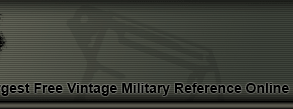
The Luftwaffe instituted the use of a dagger in 1934. The dagger was designed
based on an earlier piece used by the DLV.
There are two main types of Luftwaffe 1st model daggers produced; the
first type had nickel fittings and was the earlier type. The second type had aluminum fittings
and was introduced in late 1935. One reason for the change was to achieve a more modern look.
In addition, the same type of material wa employed in the manufacture of some airplanes.
Both models are illustrated on this page. The nickel type is first, followed
by the aluminum fittings dagger.
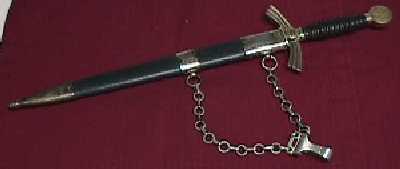

The pictures below provide a closer look at the scabbard and the hanger. Notice
the brand of the maker on the clip of the hanger. The clip was used to attach the dagger to
a loop in the belt of the dress uniform.
|
This page is a recognition and identification guide for German bayonets. Multiple
detailed photos of a specific sample are provided. Descriptions point out specific
points that should be noted.
One of the most commonly asked questions is "How much is my German bayonet worth?".
A price guide is included here to address this question. The value of the Nazi bayonets is
reviewed over a period of several years. A trend can be observed. The present worth
of the police sword in the collector's market is illustrated.
This service is provided free of charge to the visitor/enthusiast courtesy of
MilitaryItems.com,
a company dedicated
to the preservation of military history and to providing quality military antiques and
collectibles to museums, institutions and the general public.
|
|


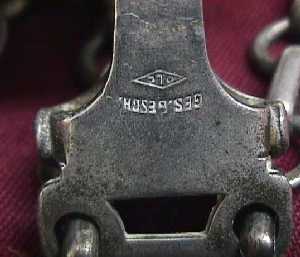
The tip of the scabbard is metal with a blunt end. The fittings are attached to the
scabbard via four screws. One on each side of the attachement. Notice that the screw head
pictured below contains a buildup of material. This may be caused due to excess cleaning
solutions gathered over time.
The handle of the dagger is blue and is wrapped by a coiled wire.


The pommel of the dagger consists of a round circle with a modified gold swastika in the middle.
This is one of the distinguishing features of the first model style. The same design is also found
near the handguard.
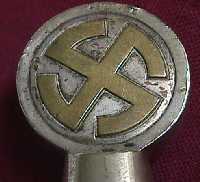

The blade has two markings on it. The largest is the brand of the manufacturer. The smaller one
is located on above the first marking and it consists of the Waffen eagle with the number five. However,
there was no official Luftwaffe markings stamped in any blade and the RZM number was never applied to an
official dagger.
There were several makers producing this item. Among the most common are found:
Carl Eickhorn
F W Holler
E F Horster
E P & S
J A Henckels
W K C
Paul Weyersberg
S M F
Carl Julius Krebs
Gbr Heller
It is possible to have other manufacturer's who do not appear on this list.

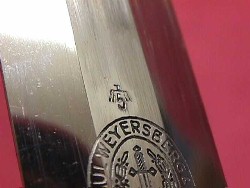
ALUMINUM vs NICKEL
A comparison between the construction of the aluminum dagger and the nickel dagger follows.
The daggers made from aluminum tend to be in better condition because the material does not
deteriorate as rapidly. Notice the difference between the main bodies and the pommel.


In another sharp contrast both scabbard tips are shown together here. Aluminum is brighter
and remains cleaner than nickel.

Many German edge weapons are currently
reproduced.
It is becoming more difficult to be able to tell the fake ones from the real ones because
the quality of the reproductions is improving. The collector must become familiarized with
the construction style and materials employed in the manufacturing of this item.
Attention to the details is critical in order to be able to determine the authenticity of
the collectible.
If you have an interest is seeing other edge weapons of the Third Reich, you can do so by going
to our
WWII German daggers and Swords
identification guide, Where we cover blades from the Heer (Army), Navy (Kriegsmarine), Air Force
(Luftwaffe) and other organizations.
| 

